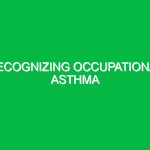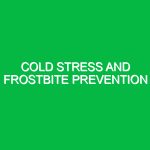Introduction
Heat-related illnesses encompass a range of health issues that can arise from excessive exposure to heat. In the context of Health, Safety, and Environment (HSE) practices, preventing heat-related illnesses is crucial, particularly in workplaces where individuals are exposed to high temperatures or strenuous activities. These illnesses can range from mild conditions, such as heat exhaustion, to severe cases like heat stroke, which can be life-threatening. Understanding how to prevent these conditions not only safeguards employee health but also enhances productivity and morale.
As warmer climates and rising global temperatures exacerbate the risks, it becomes increasingly vital for organizations to implement effective heat safety measures. This article aims to explore the various hazards associated with heat exposure, outline actionable safety precautions, and discuss relevant regulations to ensure a comprehensive approach to preventing heat-related illnesses.
Understanding Heat-Related Illnesses
Heat-related illnesses typically result from the body’s inability to cope with prolonged heat exposure. The body’s thermoregulation system works tirelessly to maintain a stable internal temperature, but under excessive heat, it can falter. This leads to several potential illnesses:
Heat Exhaustion
Heat exhaustion occurs when the body loses excessive amounts of water and salt, usually through sweating. Symptoms often include heavy sweating, weakness, dizziness, nausea, and headache. If not addressed promptly, heat exhaustion can escalate into heat stroke.
Heat Stroke
Heat stroke is a severe, life-threatening condition resulting from prolonged exposure to high temperatures. It can lead to organ failure and, if not treated within a short time, may result in death. Symptoms include high body temperature (above 104°F), confusion, seizures, and loss of consciousness.
Heat Cramps
Heat cramps are painful muscle contractions that typically occur in individuals who are working or exercising in hot conditions. These cramps are often associated with dehydration and electrolyte imbalance.
Heat Rash
Heat rash, also known as prickly heat, occurs when sweat ducts become blocked and sweat can’t escape. This condition is uncomfortable but usually not severe.
Identifying Hazards and Risks
Understanding the hazards associated with heat exposure is the first step in preventing heat-related illnesses. Here are some common risks:
High Temperatures
Working in environments with elevated ambient temperatures, such as construction sites, factories, and kitchens, heightens the risk of heat-related illnesses. Workers engaged in strenuous physical activities are particularly vulnerable.
Humidity
High humidity levels can impede the body’s ability to cool itself through sweat evaporation. This combination of heat and humidity significantly increases the risk of overheating.
Lack of Hydration
Dehydration is a significant factor in heat-related illnesses. When workers fail to replenish lost fluids, their bodies can quickly become overwhelmed, leading to heat cramps or exhaustion.
Inadequate Rest Breaks
Insufficient breaks can exacerbate the effects of heat exposure. Without regular rest periods in a cool environment, the body cannot effectively recover, increasing the likelihood of heat-related illnesses.
Personal Factors
Individual characteristics, such as age, pre-existing health conditions, or medications, can influence susceptibility to heat-related illnesses. For instance, older adults and individuals with chronic illnesses may have a reduced ability to regulate body temperature.
Safety Precautions and Best Practices
Implementing effective safety measures is paramount in preventing heat-related illnesses. Here are several best practices:
Hydration
Encourage workers to drink water frequently, even if they don’t feel thirsty. A good rule of thumb is to drink about 7-10 ounces of water every 10-20 minutes during hot conditions. Employers can provide easy access to water stations and electrolyte-replenishing drinks.
Work Scheduling
Adjusting work schedules to avoid the hottest parts of the day can significantly reduce heat exposure. Consider implementing flexible hours to allow for early or late shifts.
Rest Breaks
Regular breaks in cool, shaded areas can help employees recover from heat stress. A simple protocol might include a 10-minute break every hour for those working in extreme heat.
Clothing and Gear
Wearing lightweight, breathable clothing can aid in heat dissipation. Employers should also consider the use of cooling vests or other wearable technology designed to mitigate heat stress.
Training and Awareness
Training employees to recognize the signs of heat-related illnesses is crucial. Regular education sessions can empower workers to take action if they or their colleagues begin to experience symptoms.
Buddy System
Implementing a buddy system encourages workers to watch out for one another. Having a co-worker look for signs of heat stress can be an effective way to ensure that symptoms are recognized early.
Regulations and Standards
Several regulations govern the prevention of heat-related illnesses, ensuring workplaces maintain a safe environment for their employees:
Occupational Safety and Health Administration (OSHA)
OSHA provides guidelines for employers to follow regarding heat exposure. While specific regulations on heat stress may not exist, OSHA requires employers to provide a workplace free from recognized hazards, including excessive heat.
National Institute for Occupational Safety and Health (NIOSH)
NIOSH offers recommendations for preventing heat-related illnesses, focusing on monitoring heat indices and establishing heat illness prevention programs.
State Regulations
Some states have enacted their own regulations regarding heat safety. For example, California has specific heat illness prevention standards that require employers to implement measures to protect outdoor workers from heat-related risks.
Conclusion
Preventing heat-related illnesses is a fundamental aspect of health, safety, and environmental management. As temperatures rise, organizations must prioritize the well-being of their employees by implementing effective strategies and adhering to regulations. By fostering a culture of safety, promoting hydration, and providing necessary training, employers can significantly reduce the risk of heat-related illnesses.
Ultimately, the responsibility lies with both employers and employees. By staying informed, prepared, and vigilant, we can work together to prevent heat-related illnesses and ensure a safer working environment for everyone.


